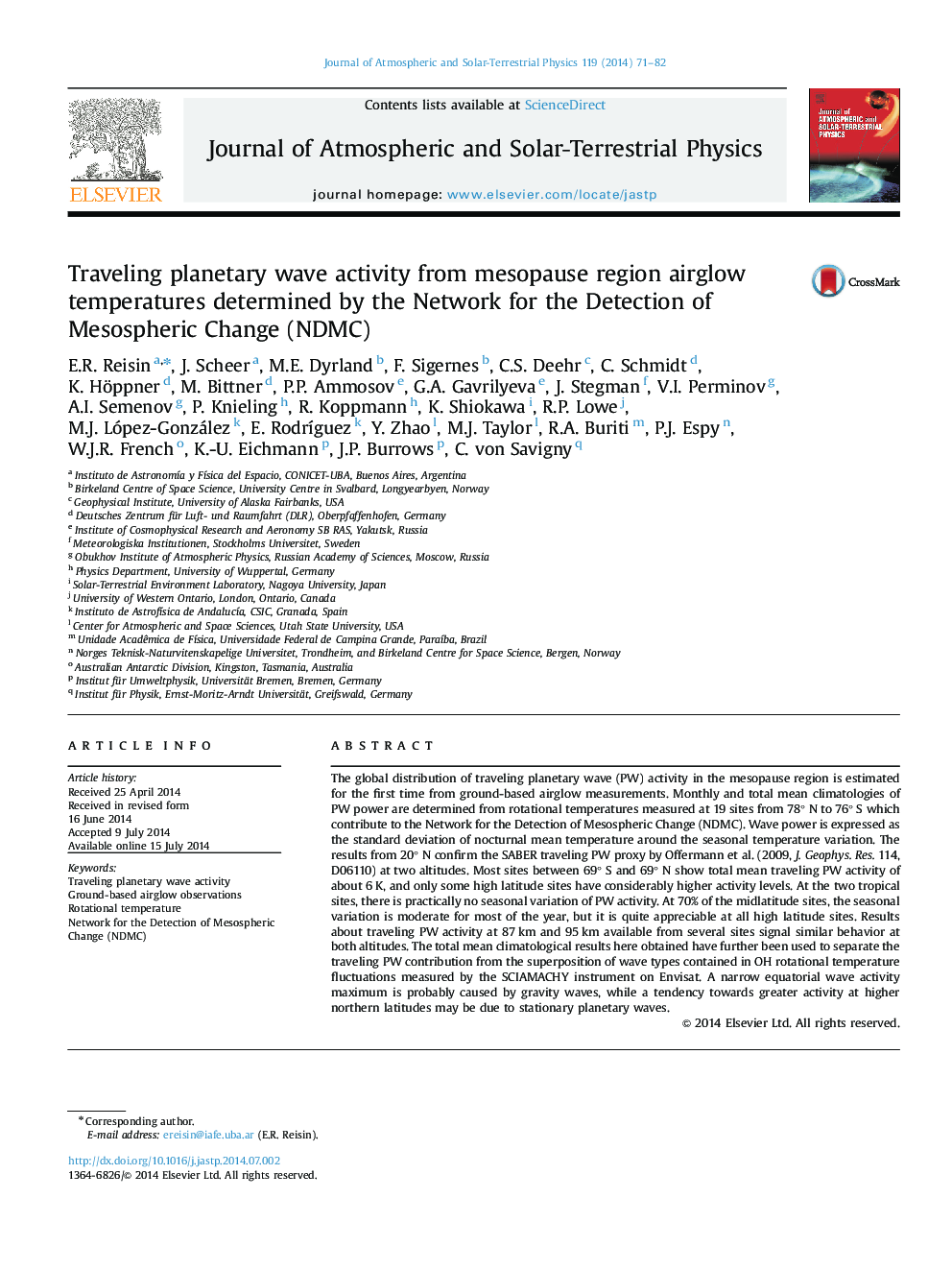| Article ID | Journal | Published Year | Pages | File Type |
|---|---|---|---|---|
| 8140141 | Journal of Atmospheric and Solar-Terrestrial Physics | 2014 | 12 Pages |
Abstract
The global distribution of traveling planetary wave (PW) activity in the mesopause region is estimated for the first time from ground-based airglow measurements. Monthly and total mean climatologies of PW power are determined from rotational temperatures measured at 19 sites from 78° N to 76° S which contribute to the Network for the Detection of Mesospheric Change (NDMC). Wave power is expressed as the standard deviation of nocturnal mean temperature around the seasonal temperature variation. The results from 20° N confirm the SABER traveling PW proxy by Offermann et al. (2009, J. Geophys. Res. 114, D06110) at two altitudes. Most sites between 69° S and 69° N show total mean traveling PW activity of about 6 K, and only some high latitude sites have considerably higher activity levels. At the two tropical sites, there is practically no seasonal variation of PW activity. At 70% of the midlatitude sites, the seasonal variation is moderate for most of the year, but it is quite appreciable at all high latitude sites. Results about traveling PW activity at 87 km and 95 km available from several sites signal similar behavior at both altitudes. The total mean climatological results here obtained have further been used to separate the traveling PW contribution from the superposition of wave types contained in OH rotational temperature fluctuations measured by the SCIAMACHY instrument on Envisat. A narrow equatorial wave activity maximum is probably caused by gravity waves, while a tendency towards greater activity at higher northern latitudes may be due to stationary planetary waves.
Keywords
Related Topics
Physical Sciences and Engineering
Earth and Planetary Sciences
Geophysics
Authors
E.R. Reisin, J. Scheer, M.E. Dyrland, F. Sigernes, C.S. Deehr, C. Schmidt, K. Höppner, M. Bittner, P.P. Ammosov, G.A. Gavrilyeva, J. Stegman, V.I. Perminov, A.I. Semenov, P. Knieling, R. Koppmann, K. Shiokawa, R.P. Lowe, M.J. López-González,
